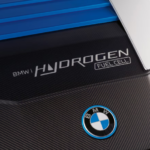Coca-Cola has been producing beverages at Genshagen near Berlin in the district of Teltow-Fläming, since 1998. The plant is one of the most modern in Germany, and one of the most efficient in the world when it comes to sustainable water use.
As with all Coca-Cola bottling plants in Germany, the Genshagen facility runs exclusively on energy from renewable sources. On average, 94 percent of reusable materials generated on site in all Coca-Cola facilities in Germany are recycled — which, by all accounts, is a good metric.
 But good is sometimes not good enough.
But good is sometimes not good enough.
To further optimize the recovery of reusable materials left over after production. Coca-Cola has identified more than 50 reusable materials, including four types of paper and eight types of foil and plastics. There are more than 300 containers for reusable materials on site, and 99 percent of all production waste is recycled or upcycled. These figures have been certified by the independent environmental institute, bifa.
In 2015, Coca-Cola introduced a new form of packaging in Germany made entirely from recycled PET plastic bottles. Now, a bottle becomes another bottle without the need for new raw materials. Coca-Cola won a German Packaging Award for the breakthrough innovation. Already, 95 percent of Coca-Cola plastic bottles are recycled in Germany.
Thus, the materials cycle continues to close.
In the future, this process for optimizing the recycling of reusable materials will be adopted by other Coca-Cola plants.
Reference- Coca-Cola newsroom,






